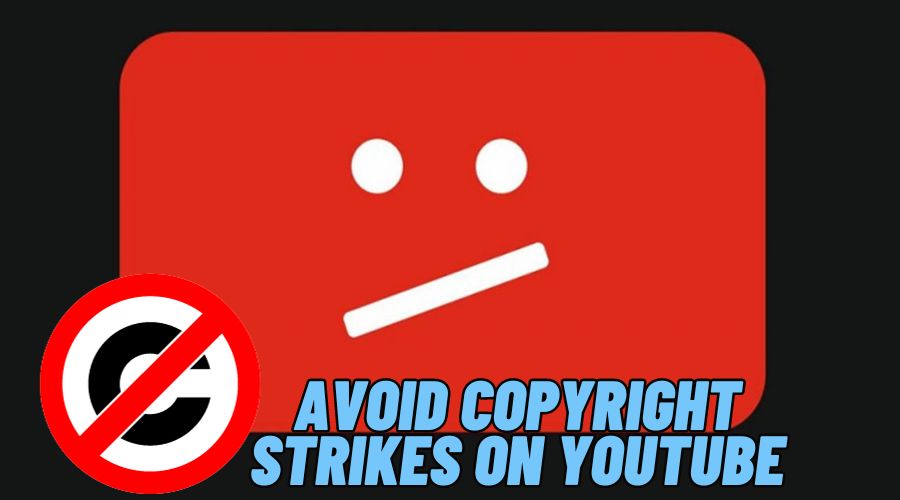Are you an aspiring content creator on YouTube? Have you ever had your videos flagged or taken down due to copyright infringement? It can be a frustrating experience, especially when you are trying to share your creativity with the world. But fear not because there are ways to avoid getting copyrighted on YouTube.
Sharing your YouTube videos with the world is an incredible feeling, most of the time! But one thing that’s frustrating for any creator is receiving a YouTube copyright claim on a published video. For many YouTubers, copyright claims are not a big deal and will only cause significant issues if you try to make an income from your videos. You will want to avoid the videos being flagged with copyright issues. The copyright issues can sometimes lead to copyright strikes, demonetizing your videos, or even losing your channel. Avoiding copyright claims requires obtaining the correct legal permissions and is not as simple as just crediting the artist. This article will talk about legally utilizing music to avoid copyright claims on YouTube.
Why Does YouTube Copyright Music?
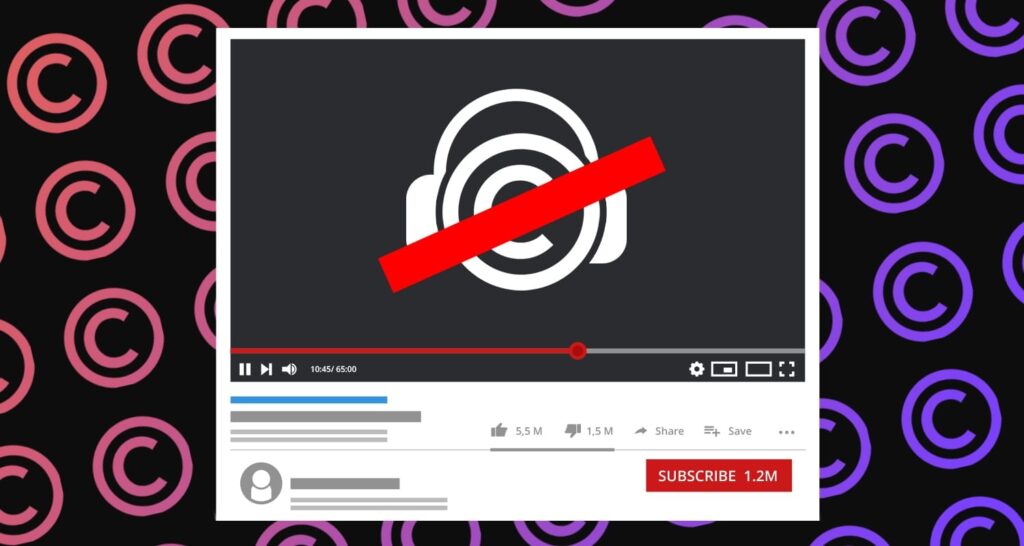
YouTube respects all creators’ music rights and wants to ensure they get paid for their work. YouTube uses a system called Content ID to scan videos for music that belongs to someone else and might be used illegally or without permission.
Let us look at how the content ID Works: When you upload a video to YouTube, Content ID compares it to a database of music that the owners register. If it finds a match, it notifies the owner and lets them decide what to do with your video. They can either allow it, block it, or monetize it.
Steps on How to Get Copyrighted on YouTube
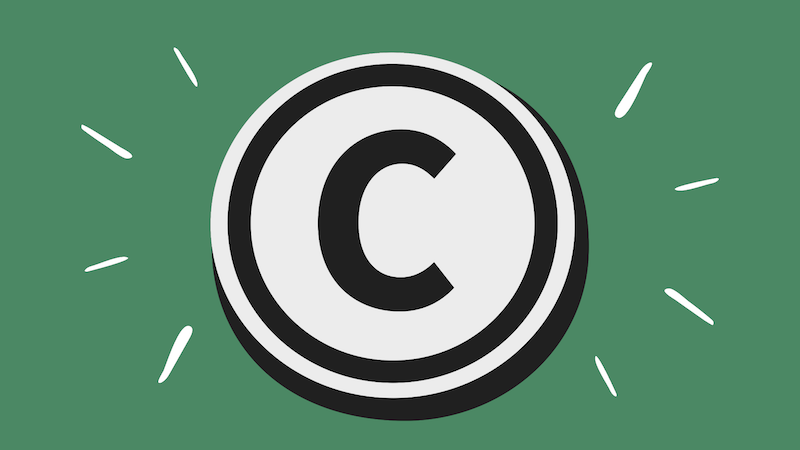
Following specific guidelines and practices is essential to avoid copyright infringement on YouTube. Here are some helpful tips;
Step 1: Create Original Content: The most effective way to avoid copyright infringement is by creating and using original content. Ensure your footage, images, music, and other materials are initially created by you, or you have obtained the appropriate licenses or permissions.
Step 2: Use Copyright-Free or Licensed Material: If you need to use copyrighted material in your videos, ensure you have the necessary permissions. Look for materials labeled as Creative Commons (CC0) or under a Creative Commons license that permits reuse.
Step 3: Understand Fair Use: Familiarize yourself with the concept of fair use, which allows limited use of copyrighted material for commentary, criticism, news reporting, teaching, research, parody, and other purposes. Use this content in a transformative manner, meaning you use it to add new meaning, value, or insight rather than just copying or reproducing it. Doing this can help you qualify for the fair use exception, which allows you to use copyrighted material without permission under certain circumstances. However, determining fair use can be complex, so it’s advisable to consult a legal professional if you need clarification.
Step 4: Obtain Proper Licenses and Permissions: If you want to use copyrighted material beyond fair use or are unsure whether your use qualifies as fair use, you should obtain explicit permission from the copyright holder or owner. Doing this involves contacting the copyright owner and securing a license or agreement or paying a fee to obtain a permit that grants you the right to use it. You can find licensed music on websites like Lickd or FlatFeeCorp that offer affordable and legal options for YouTube creators.
Step 5: Use YouTube’s Copyright Tools: YouTube provides tools such as Content ID, which allows copyright owners to identify and manage their copyrighted content on the platform. Respect the claims made by copyright owners and consider editing or removing any infringing content to avoid copyright strikes or other penalties.
Step 6: Give Proper Attribution: If you use any copyrighted material under fair use or with permission, credit the content sources in the video description appropriately. You should acknowledge and credit the content owner and provide a link to their website or channel. Include the title, author, source, and other necessary information to attribute the content to the source. Doing this can help you avoid claims of plagiarism or dishonesty and show respect to the creator of the content.
Step 7: Educate Yourself on Copyright Law: Make an effort to educate yourself about copyright laws and regulations in your country. Stay updated on any changes or updates to ensure you are compliant with the latest requirements.
Step 8: Remove, rearrange, or change the copyrighted clips’ view, speed, music, or effects. You should edit the content to make it different from the original or less recognizable by YouTube’s Content ID system. It can help you avoid automatic detection and claims by the content owner.
Step 9: Avoid uploading sensitive, harmful, or family-unfriendly content. By doing this, you will be following YouTube’s Community Guidelines and avoiding content that is violent, hateful, sexual, illegal, or otherwise inappropriate. This can help you avoid strikes, penalties, or removal of your videos by YouTube.
Step 10: Add a watermark and a copyright notice to your videos. Add a logo or a symbol that identifies you as the video’s creator and a statement that asserts your ownership of the content. You will be protecting your videos from unauthorized use or theft by others.
Step 11: Use royalty-free music. Here, you use music that is free to use for any purpose. You can find royalty-free music on YouTube’s Audio Library, upbeat, or other websites that offer such services.
Though these tips provide general guidance, copyright law can be complex and vary depending on your location. It is always a good idea to consult a legal professional for specific advice regarding copyright infringement to ensure you are adequately protected.
Consequences of Using Copyrighted Content
It is important to note that if you don’t have the correct legal approval from the copyright holders, they will decide to take action against your video. YouTube determines it to be valid; you will receive a copyright strike. As a result of your first copyright violation, you may not be able to monetize your videos for 90 days and will be required to learn about copyright and how YouTube enforces copyright law.
Once you receive the copyright strikes, you can face serious repercussions such as;
- Account termination. Your account can be terminated entirely or deleted; this is a permanent move. You will lose both your followers and videos.
- You are getting rid of or deleting videos uploaded to your YouTube channel. With the owners’ permission, YouTube will delete all the videos uploaded on your channel, which is as severe as it sounds.
- Prevention of creating new channels. You can also be prevented from creating new media using your credentials, which would have been picked from your channel.
- Demonetizing your content – The most common result of a copyright infringement claim is monetization. If the copyright holder learns you’re using their music without permission, they can monetize your video and claim all proceedings it generates instead of you.
- Muting your content – If the copyright owner chooses not to monetize your content, they will still choose to mute it if it’s using an audio file or song without permission. Your video will still be available but won’t have any sound in the snippet where the copyrighted music should be. Audio is one of the most critical aspects of successful YouTube videos, so not having any on your content could lead to a severe drop in view counts.
- Tracking your content – The copyright owner can track your content’s viewer statistics without taking further action. While this doesn’t sound too bad, please don’t rely on it happening to you, as it’s the least likely result of copyright infringement claims.
- Blocking your content – The most permanent action the copyright holder can take against it is blocking it altogether. It means that it will become unavailable on YouTube and may lead to your entire channel being penalized. Imagine all the hard work you put into planning, filming, editing, and uploading a video, only to have it removed from public view entirely! This is something that you want to avoid,
Even if you remove the video, your account will still be subject to the copyright strike. There are several ways to get rid of copyright strikes, as listed below;
- Wait through the 90-day copyright strike validity term.
- Request that the copyright holder withdraw their request for copyright removal.
- Submit a counter-notification to refute the claim if you think your content was removed mistakenly and didn’t breach copyright laws.
Common Mistakes Made When Trying to Avoid YouTube Music Copyright Claims
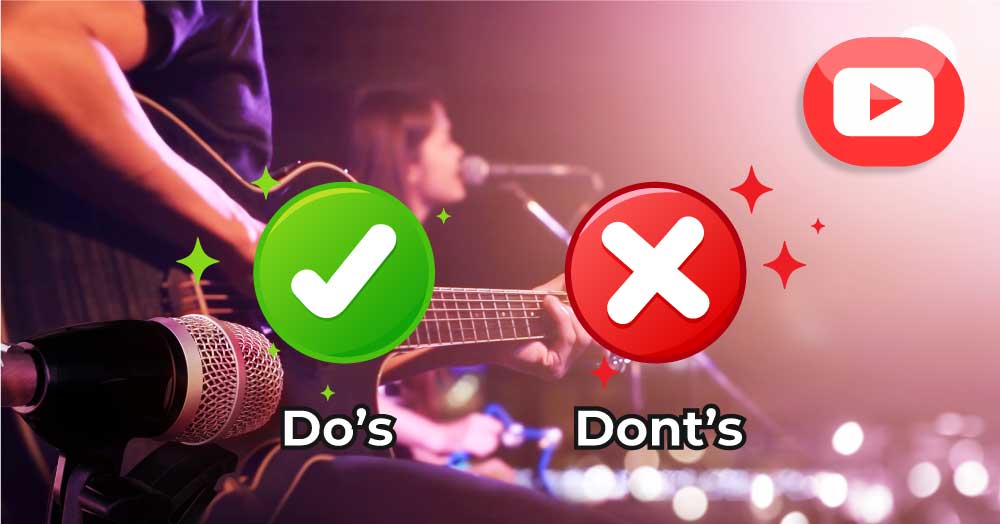
Copyright claims might still be against content authors even after the proper safeguards are taken. Here are some errors to avoid:
- You are crediting the song’s artist in the description. Even if you credit the owner, you still need permission from the original owner to use the theme.
- Speeding up or slowing down a song to try to bypass Content ID. Distorting the song not only potentially lowers the quality but also causes YouTube to constantly update the Content ID to identify music that has been warped.
- I am only playing a short portion of the song. Even a few seconds of copyrighted music can be identified by Content ID. Plus, it’s much better to use more than just a few seconds of a song to create a quality viewing experience for your audience.
Biggest Myths about Copyright, Music, and Video
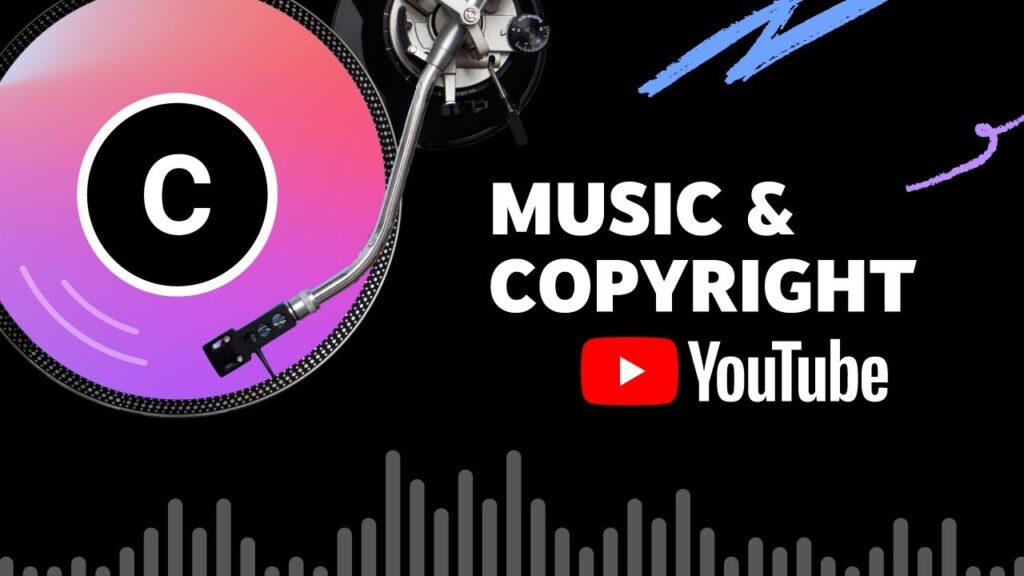
So, now that we have looked at some of the biggest concerns regarding copyright, music, and video, let’s look at some of the biggest myths surrounding the topic. This part should clear up any questions you may have or give you the extra knowledge you need as a video creator:
- Nobody has contacted me, so I must not be violating their copyright. Copyright can be difficult to detect, but that doesn’t mean it isn’t being broken. The longer you benefit from somebody else’s copyright, the harsher the penalty could be when you are discovered.
- My work is just a fan video, so I’m covered. This one is a little complicated: Maybe, but not necessarily. The type of use is critical, but there are other ways to determine if copyright has been violated. This part could fall under fair use, as discussed above. If it’s a parody, you only have a nearly fool-proof chance to monetize these works. Comedy, and specifically criticism, is heavily protected by US laws.
- I didn’t enable ads on/monetize my video, so it’s fair use. Making money from copyright work is the most blatant violation, but just because you are not trying to cash in doesn’t mean you are in the clear. The original copyright holder may still be able to force a takedown of your material, even if it’s being used within the bounds of the law. You can avoid a lawsuit without making money with the work.
- I didn’t see a copyright notice, so it must not have one. Think again. Everything created in the US and other major countries is copyrighted and protected immediately, with no action required by the creator. A notice may increase the strength of that copyright and the damages received in the case of a violation, but the absence of a copyright notice doesn’t mean the lack of copyright.
- I found it in the public domain (the Internet is the public domain). The Internet is public, but that does not make everything on the Internet public domain. Just because you found it online doesn’t mean you are safe to use it.
- I wrote a disclaimer in the description crediting the artist and claiming I had no intention to violate copyright laws.
FAQs
Q. Are YouTube videos copyrighted?
Yes, every video on YouTube is an audiovisual work that belongs to the creator or the owner of the content. They have exclusive rights to post, use, and grant permission for their videos. You must respect their rights and get their authorization before using them or parts of their videos in your content.
Q. How do I get permission to use someone else’s content in my video?
You need to contact the content owner for permission to use it. YouTube cannot grant you these rights or help you find the owner. You have to do your research and handle this process independently or with a lawyer’s help.
Q. What is fair use, and how does it apply to YouTube?
Fair use is a legal doctrine that allows you to use copyrighted material without permission under certain circumstances, such as adding commentary, criticism, or parody. Courts determine fair use on a case-by-case basis based on four factors:
- The purpose and character of the use
- The nature of the copyrighted work
- The amount and substantiality of the copyrighted work used
- The effect on the potential market for or value of the copyrighted work
Q. How do I avoid automatic detection and claims by YouTube’s Content ID system?
Content ID is a system that scans videos for music registered by the owners and matches them to a database. If it finds a match, it notifies the owner and lets them decide what to do with your video. They can either allow it, block it, or monetize it. To avoid Content ID, you can use royalty-free music or original footage or edit the content to make it different from the original or less recognizable by the system.
Q. What happens if I get a copyright claim or strike on my video?
A claim means that the content owner has identified and verified the content in your video. A claim does not necessarily mean that your video infringes or you have done something wrong. You can either accept the claim, dispute it, or remove the content. A strike means that your video has been removed from YouTube because of a legal request from the content owner or a review by YouTube. A strike can affect your channel’s status and privileges. You can either resolve the issue, appeal the decision, or wait for the strike to expire.
Final Thoughts
Copyright disputes on YouTube can be hectic for content creators. By becoming aware of YouTube’s copyright policy and taking the required safeguards, a creator can effectively prevent copyright issues on their YouTube channel.
